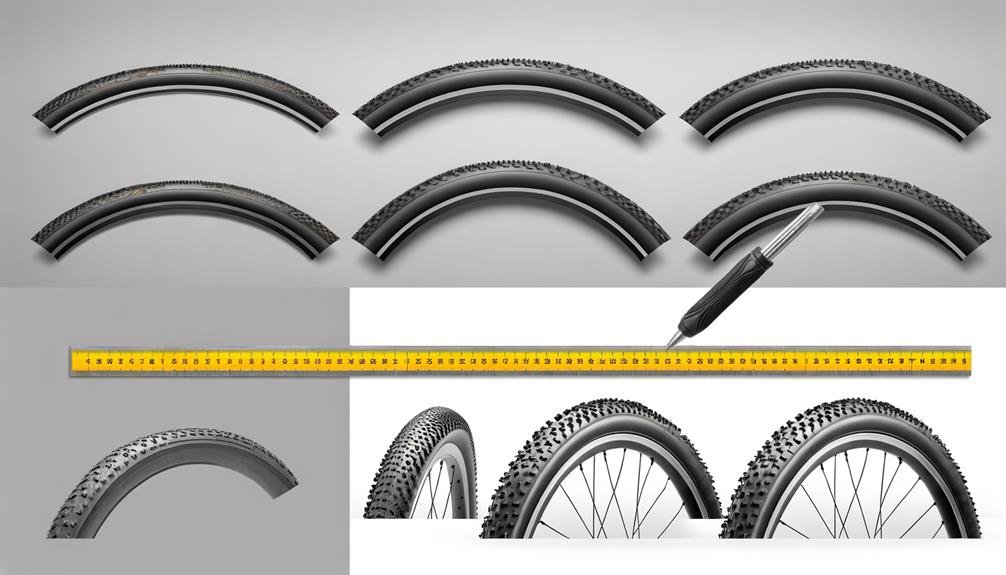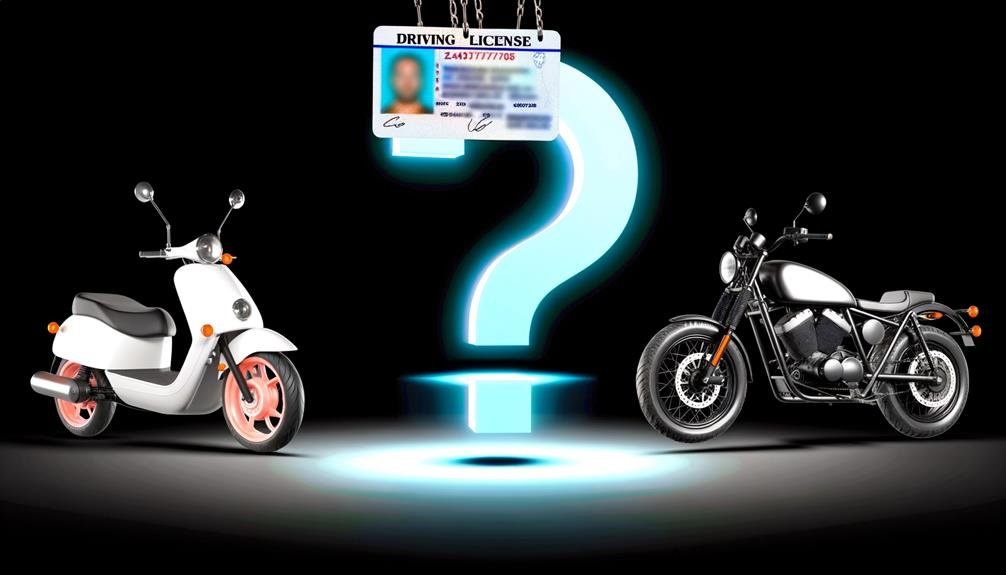Charles Miller is a veteran bike enthusiast with over 12 years of experience dealing with bikes as a mechanic. Despite immense love and expertise for...
The cost of servicing an e-bike is a subject of considerable significance for both potential owners and current users of this increasingly popular mode of transportation. Expenses can range from routine maintenance to periodic battery and component replacements, with a variety of factors influencing the overall cost.
While it is generally accepted that e-bikes are pricier to maintain than their conventional counterparts, due to their additional electrical parts, the exact sum remains a point of contention. The subsequent discussion will seek to uncover the hidden costs of e-bike ownership and provide a clearer picture of what owners can expect to invest in their eco-friendly commute.
- Key Takeaways
- Understanding Ebike Maintenance Costs
- Comparing Ebike and Traditional Bike Expenses
- Ebike Battery Replacement Costs
- Self-Servicing Your Ebike: Is It Possible?
- Common Ebike Maintenance Expenses
- Ebike Repair Costs Breakdown
- Tips for Reducing Ebike Maintenance Costs
- The Lifespan of Ebike Components
- Ebike Tire Replacement Frequency
- Legal Speed Limits for E-Bikes
- Frequently Asked Questions
- Conclusion
Key Takeaways
- Ebike maintenance costs can range from $100 to $500 per year, depending on the type of service needed.
- Battery replacement for an ebike can cost anywhere from a few hundred to over a thousand dollars.
- Repairing or replacing critical components like the motor, frame, or electronic system can cost between $200 and $1500.
- Ebikes have higher upfront costs compared to traditional bikes due to their advanced electrical components, and ongoing maintenance fees for ebikes can be higher as well.
Understanding Ebike Maintenance Costs
Often, ebike maintenance costs can fluctuate greatly based on the specific type of service needed, ranging from regular maintenance to replacements of key components such as batteries, motors, frames, and electronics. To fully understand ebike maintenance costs, one must consider both regular upkeep and potential component replacement.
Regular maintenance for an ebike may range from $100 to $500 per year, depending on the intensity of use and riding conditions. This usually includes routine checks and adjustments to brakes, tires, and chains, ensuring the longevity and safety of the bike.
However, ebikes, due to their electrical components, may require more maintenance than traditional bikes. Battery replacement, a common ebike service, can range from a few hundred to over a thousand dollars. Other critical components such as the motor, frame, or electronic system, if damaged, could cost between $200 and $1500 to repair or replace.
Understanding the ebike maintenance costs is crucial for prospective and current ebike owners. It allows planning for regular service costs and potential high-cost repairs. With this knowledge, you can confidently answer the question, 'how much is an ebike service?' and ensure that your ebike stays in top condition for many years to come.
Comparing Ebike and Traditional Bike Expenses
When considering the financial implications of owning an ebike versus a traditional bike, one must examine three main costs: initial purchase, ongoing maintenance, and replacement parts.
It is important to note that while the upfront cost of an ebike can be higher, the expenses related to its upkeep may also exceed those of a traditional bike due to its intricate electrical components.
Furthermore, the cost of replacement parts, particularly batteries, can significantly influence the overall expenses of maintaining an ebike.
Initial Purchase Costs
Examining the initial purchase costs, it's clear that eBikes command a higher price than traditional bikes, primarily due to their advanced electrical components and battery systems. Electric bikes often necessitate sizable initial investments, reflecting their innovative technology and enhanced performance capabilities.
However, when assessing these initial purchase costs, prospective buyers should consider the potential long-term savings. Granted, traditional bikes have a lower upfront cost, but the maintenance and operational expenses can accumulate over time. An eBike, despite its higher initial cost, can deliver value in terms of lower maintenance and operating costs.
In essence, the initial purchase costs of eBikes can be viewed as an investment towards a more efficient and sustainable mode of transportation. It's crucial to weigh these factors to make an informed purchasing decision.
Ongoing Maintenance Fees
Having considered the initial purchase costs, it becomes equally important to explore the ongoing maintenance fees associated with both eBikes and traditional bikes.
- The complexity of ebike maintenance due to their electrical components can result in potentially higher ongoing maintenance fees compared to traditional bikes.
- Regular maintenance for both variants includes checking and adjusting brakes, gears, and tire pressure.
- A significant expense exclusively associated with eBikes is battery replacement, which can cost anywhere from a few hundred to over a thousand dollars.
- Overall, the cost of maintaining an eBike is generally higher than a traditional bike, primarily due to factors such as battery replacement.
Cost of Replacement Parts
In assessing the relative expenses of eBikes and traditional bikes, it is crucial to consider the cost of replacement parts, which can significantly contribute to the overall maintenance budget. This comparison provides an understanding of the potential repair costs associated with each type of bike.
Here's a table showing an average cost comparison:
| Part | eBike Cost | Traditional Bike Cost |
|---|---|---|
| Battery | $100-$1000 | N/A |
| Tire | $20-$100 | $20-$100 |
| Brake | $20-$100 | $20-$100 |
| Annual Maintenance | $100-$500 | $50-$200 |
From this, it's clear that while some costs are comparable, the battery replacement for eBikes particularly elevates their overall maintenance cost. Thus, understanding these expenses is crucial to making an informed purchasing decision.
Ebike Battery Replacement Costs
As we transition to the subtopic of Ebike Battery Replacement Costs, it is crucial to understand the factors influencing these costs.
We will explore the average prices for battery replacements in various ebike models and discuss strategies for extending battery life to minimize these expenses.
This information will provide a comprehensive understanding of the financial implications of maintaining the power source of an ebike.
Understanding Battery Replacement
Ebike battery replacement, a significant factor in maintenance budgeting, can vary in cost from $300 to $900, depending on the specific make and model of the bike. This cost is a crucial consideration for potential and current ebike owners.
- The e-bike battery can range in price, with some even reaching up to $900, particularly for high-end models.
- Accidents can compromise the Electric bike battery, necessitating costly replacements.
- The cost of battery replacement should be factored into the overall maintenance budget for an e-bike.
- Understanding these costs allows for informed decisions regarding ebike ownership and upkeep.
Being aware of these considerations promotes a sense of belonging among the ebike community, through shared knowledge and experience.
Average Replacement Prices
Building on the costs associated with ebike battery replacement, it's crucial to explore the average replacement prices for not only batteries but other essential components as well.
The average lifespan of an ebike battery can cost anywhere from $300 to $900, depending on the ebike's make and model. More advanced models may incur higher replacement costs.
Damaged motors can be another significant expense, with costs ranging from $200 to $800.
Frame damage from accidents can also be costly, requiring anywhere from $100 to $600 for repairs and over $1,500 for a full frame replacement.
Lastly, electronic component replacements can vary between $50 and $300 per component, again subject to its complexity.
Prolonging Battery Life
Understanding how to prolong your eBike battery's lifespan can significantly reduce replacement costs and enhance the overall performance of your electric bike. To maximize the lifespan of an e-bike battery, it is important to follow several key maintenance and usage guidelines:
- Regular maintenance and proper care are paramount. This includes cleaning the battery contacts and avoiding over-discharging.
- Extreme temperatures, both hot and cold, can damage the battery and shorten its life. Try to store and use your eBike in moderate conditions.
- Instead of charging your battery to 100%, aim for 80-90%. This can help in prolonging battery life.
- Always use the manufacturer-provided charger to avoid potential battery damage.
Following these steps will ensure you get the most out of your eBike battery.
Self-Servicing Your Ebike: Is It Possible?
Harnessing a basic understanding of mechanical components, coupled with specialized assistance for intricate systems like the motor or electronics, makes self-servicing of your eBike not just a possibility, but a practical approach for regular maintenance. This concept, self-servicing your ebike: is it possible?, has become a trending topic in the eBike community, due to the potential cost savings and increased understanding of your vehicle's operation.
The basic knowledge required includes an understanding of how to check and adjust brakes, gears, tire pressure, and undertake occasional battery replacements or software updates. These tasks form the backbone of regular eBike maintenance and can be accomplished by most owners with a little time and patience.
However, it's essential to recognize that while self-servicing may reduce your annual spending on parts and materials, it also involves an investment of your time. Furthermore, complex tasks like repairing or replacing a damaged motor, or dealing with advanced electrical components, may still require professional assistance. These tasks can be costly, but outsourcing them ensures the longevity and performance of your eBike.
Common Ebike Maintenance Expenses
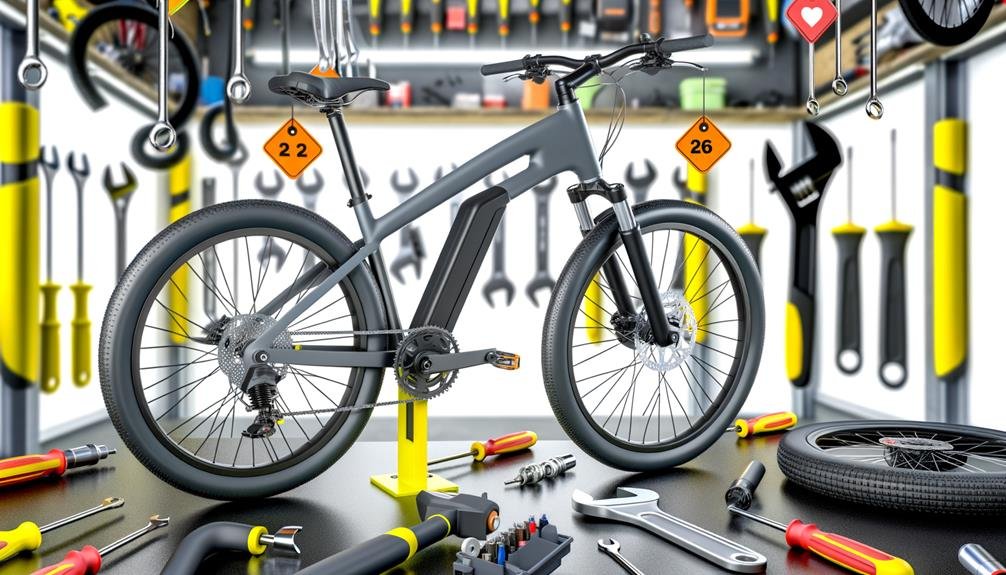
In the realm of ebike service pricing, understanding common expenses for maintenance is crucial. This involves the examination of ebike repair costs, the financial implications of regular upkeep, and the prices associated with replacement parts.
These components collectively create the financial landscape of ebike ownership and maintenance.
Ebike Repair Costs
Navigating the landscape of ebike repair costs reveals a spectrum of expenses. Battery replacement, for example, can range from $300 to $900. The repair or replacement of a damaged motor can cost between $200 and $800, depending on the extent of the damage and motor type.
- Frame Repair: Costs typically range from $100 to $600. Total frame replacement can exceed $1,500 for certain models.
- Electronic Component Repair: Depending on the specific component and its complexity, ebike repair costs can range from $50 to $300 per component.
- Brake Repair: Costs for brake repairs on eBikes can range from $40 to $200.
- Drivetrain Repairs: Depending on the specific components affected, these repairs may cost between $100 and $500.
Being aware of these potential costs can help you plan for how much an ebike service may cost.
Regular Ebike Upkeep
To maintain optimal performance of your ebike, regular preventative maintenance is not just recommended, but essential. This upkeep encompasses services such as chain and cassette installation and replacement, dropper post and spoke services, as well as bike build and warranty services. The table below provides a snapshot of potential expenses involved in regular ebike upkeep:
| Service | Average Cost |
|---|---|
| Chain & Cassette Services | $30 – $50 |
| Dropper Post & Spoke Services | $40 – $70 |
| Bike Build & Warranty Services | $80 – $150 |
| 30-Day Love It Guarantee | Included |
| eBike Firmware Updates | Included |
These costs are a rough guide, and the specific prices can vary. So, if you're wondering "how much is an ebike service?", it largely depends on your bike's needs and the chosen service package.
Replacement Parts Prices
Delving into the realm of replacement parts, the cost of maintaining an ebike can be significantly influenced by expenses such as battery, tire, and brake replacements. This offers a clearer picture of the replacement parts prices and gives an answer to the question, how much is an ebike service?
- Battery Replacement: The price can range from a few hundred to over a thousand dollars, depending on the type and quality of the battery.
- Tire Replacement: Costs can vary from $20 to $100 or more, depending on the type of tire and the local market price.
- Brake Replacement: This may range from $20 to $100 or more, depending on the brake system.
- Regular Maintenance: Expenses can fall between $100 to $500 per year, including basic servicing and minor part replacements.
Ebike Repair Costs Breakdown
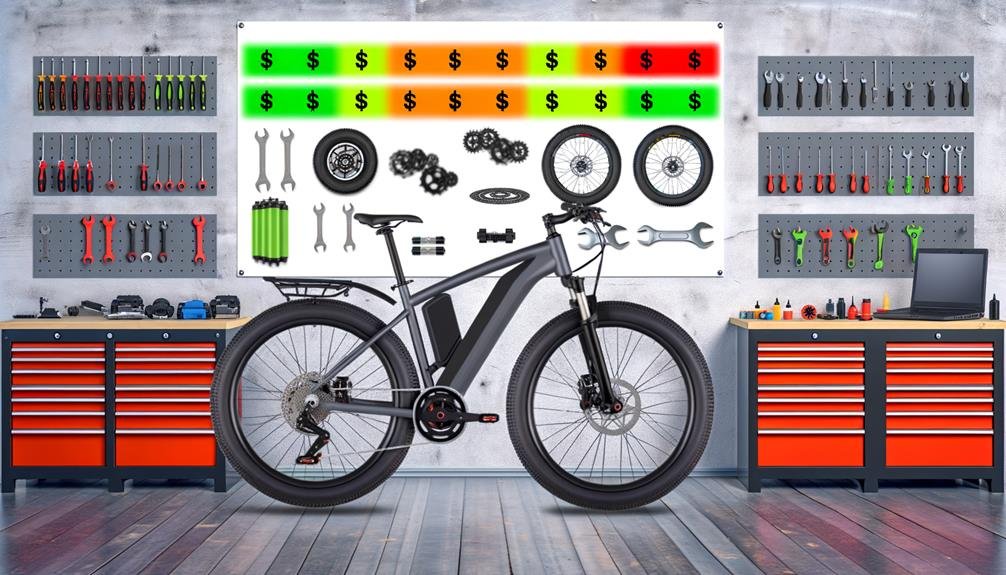
Understanding the cost implications of eBike repairs is crucial, with prices varying significantly depending on the specific component that requires attention. The ebike repair costs breakdown can help you anticipate potential expenses and make informed decisions about how much is an ebike service.
The most expensive component to replace is often the battery, which can range from $300 to $900. Similarly, the motor, another key component of the eBike, can cost between $200 and $800 to repair or replace. Furthermore, the frame of an eBike, depending on the severity of the damage and model, can cost anywhere from $100 for minor repairs to over $1500 for a complete replacement.
Less costly but still significant are the electronic components, which can range from $50 to $300 per component. Additionally, accidents can lead to damage to the brakes and drivetrain, with costs ranging from $40 to $200 for brake repairs and $100 to $500 for drivetrain repairs.
Understanding these costs can help you plan for and manage the upkeep of your eBike, ensuring that you continue to enjoy the benefits of this cost-effective and environmentally-friendly mode of transport.
Tips for Reducing Ebike Maintenance Costs
Minimizing the maintenance costs of an eBike can be achieved through a series of practical steps, designed to prolong the lifespan of its critical components and reduce the frequency of professional repairs.
Here are some tips for reducing eBike maintenance costs.
- Regular Maintenance: This is the first line of defense against costly repairs. Regularly cleaning and lubricating the chain and sprockets prevents premature wear and tear, reducing the need for frequent replacements.
- Tire Care: Maintaining proper tire pressure and inspecting for cuts or signs of wear can prolong the life of your tires and avoid frequent replacements.
- Brake System Inspections: Regular brake system inspections and adjustments ensure optimal performance and prevent costly repairs.
- Battery Maintenance: Investing in a battery maintenance routine can extend its lifespan, reducing the frequency of expensive battery replacements.
To further reduce costs, consider learning basic eBike repair and maintenance tasks. This enables you to handle minor issues on your own, reducing the need for professional assistance.
These steps not only save you money but also enrich your eBike experience by promoting a sense of belonging and ownership.
The Lifespan of Ebike Components
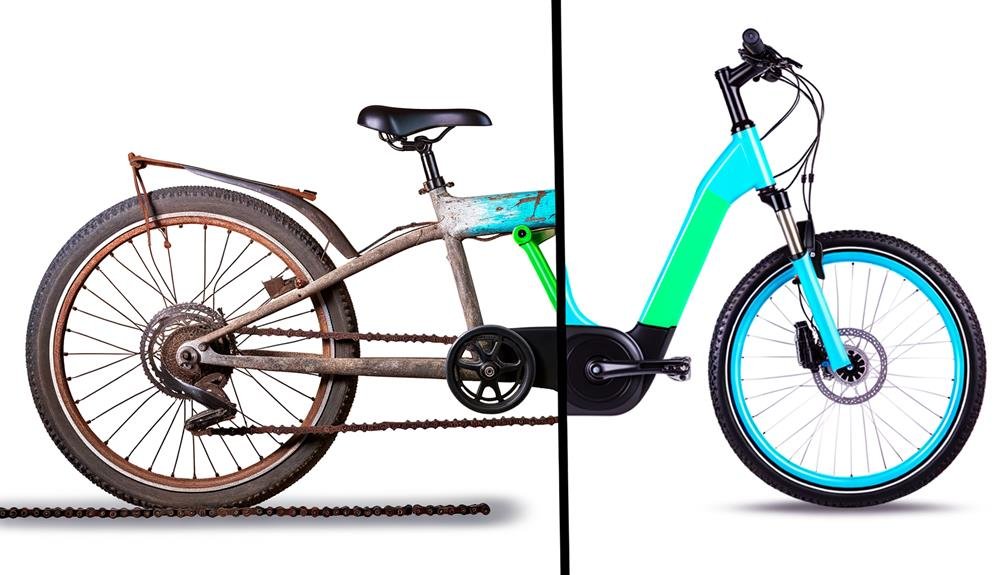
The lifespan and performance of eBike components, which can significantly vary based on factors such as usage, maintenance, and the inherent quality of the components, hold a direct impact on the overall cost and experience of eBike ownership. Being aware of the lifespan of eBike components, particularly the mechanical components, is key for optimal functioning and cost-effectiveness.
Frequent and proper maintenance can prolong the life of these components, while neglect can result in premature wear and expensive repairs or replacements. For instance, routine tasks such as checking and adjusting brakes, gears, and tire pressure can help maintain the mechanical components' integrity.
Here's a quick overview of the lifespan and cost of some key eBike components:
| Component | Lifespan | Replacement Cost |
|---|---|---|
| Battery | 2-4 years | $300 – $900 |
| Motor | 3-5 years | $200 – $800 |
| Frame | 5-10 years | $100 – $600 |
Understanding these aspects will help you, as an eBike owner, make informed decisions regarding servicing, replacement, and overall bike care. This knowledge can foster a sense of belonging in the eBike community, empowering you with the ability to take charge of your eBike's health and longevity.
Ebike Tire Replacement Frequency
Shifting our focus from the broader component lifespan to a more specific element, the frequency of eBike tire replacements is a crucial aspect of maintenance that warrants detailed attention. Your riding habits, the terrain you traverse, and the overall care you give to your eBike all factor into the eBike tire replacement frequency.
When you consistently use your e-bike, it becomes important to understand the signs that indicate the need for tire replacement:
- Mileage: Typically, eBike tires should be replaced every 1,500 to 3,000 miles. However, it's important to note that this range is dependent on several variables such as riding style and terrain.
- Tire Tread Depth: Regularly check the tread depth of your tires. When it wears down to 1/16 inch, it's time for a replacement.
- Physical Damages: Inspect your tires for cuts, punctures, or sidewall damage. These may compromise the safety of your rides and necessitate tire replacement.
- Proper Tire Pressure: Maintaining the correct tire pressure can extend the lifespan of your tires and reduce the frequency of replacements.
Legal Speed Limits for E-Bikes
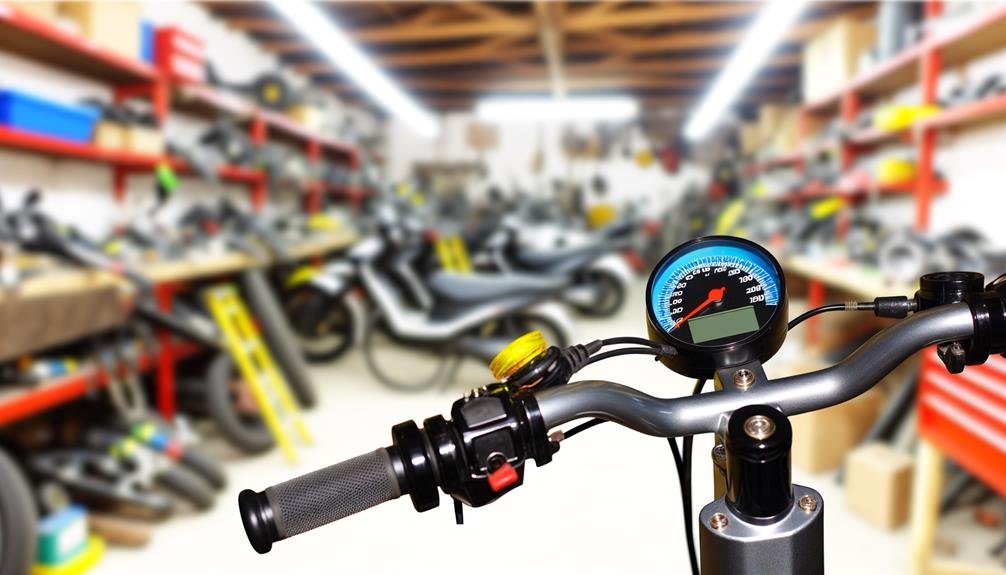
Navigating the legal landscape of e-bike speed limits is a critical aspect of responsible e-bike operation, with these limits varying by location and e-bike type. E-bikes require awareness of the legal speed limits for e-bikes to ensure not only safety but also compliance with local regulations.
| Location | Type of E-bike | Speed Limit |
|---|---|---|
| USA | With Pedal Assistance | 20-28 mph |
| USA | Class 1 & 2 | 20 mph |
| USA | Class 3 | 28 mph |
As seen in the table, the US typically imposes a speed limit of 20 to 28 mph when e-bikes are operated with pedal assistance. Furthermore, different classes of e-bikes may have specific speed restrictions. Class 1 and 2 e-bikes are generally restricted to 20 mph, while Class 3 e-bikes can go up to 28 mph.
Adherence to these regulations is not merely a legal obligation; it is also a safety measure. It is crucial, therefore, to familiarize oneself with local laws and regulations regarding e-bike speed limits before embarking on any ride. This way, you can enjoy the e-bike experience while maintaining safety and legality.
Frequently Asked Questions
How Much Is Maintenance on E-Bike?
E-bike maintenance costs can vary considerably, depending on the need for parts replacement or repair. Comparatively, DIY e-bike maintenance can be cost-effective, but requires technical knowledge and understanding of specific e-bike components.
How Often Do Ebikes Need Servicing?
Ebike servicing frequency is dictated by usage and manufacturer's guidelines, crucial for optimal performance. Servicing intervals greatly impact the bike's longevity. Regular maintenance, adhering to manufacturer's advice, ensures the ebike's efficient operation and prolongs its service life.
How Much Does It Cost to Fully Charge an Ebike?
The cost to fully charge an ebike is generally minimal, approximately 7 cents for a 500Wh battery in the US, considering charging station availability. This makes ebikes an affordable, eco-friendly transportation option.
Do You Need to Service Ebikes?
Ebike longevity largely leans on service necessity. Regular maintenance of electrical components, brakes, gears, and tire pressure safeguards optimum performance, affirming the essentiality of routine services for ebikes, despite the absence of specific service cost context.
Conclusion
In conclusion, the maintenance expenses for an e-bike might be steeper compared to traditional bikes, primarily due to the additional electrical components.
However, efficient self-servicing and regular maintenance can mitigate these costs to a significant extent.
Interestingly, despite higher maintenance costs, the global e-bike market is projected to reach $46.04 billion by 2026, indicating the increasing preference for these eco-friendly transportation options.
Ultimately, understanding and planning for these expenses is pivotal for prospective and current e-bike owners.

Charles Miller is a veteran bike enthusiast with over 12 years of experience dealing with bikes as a mechanic. Despite immense love and expertise for his Tacoma, he rides his Trek Ebike more. Anytime you meet him, you’ll either hear him talking about Bikes, or writing about all things bikes and cars on this blog.
More Posts

